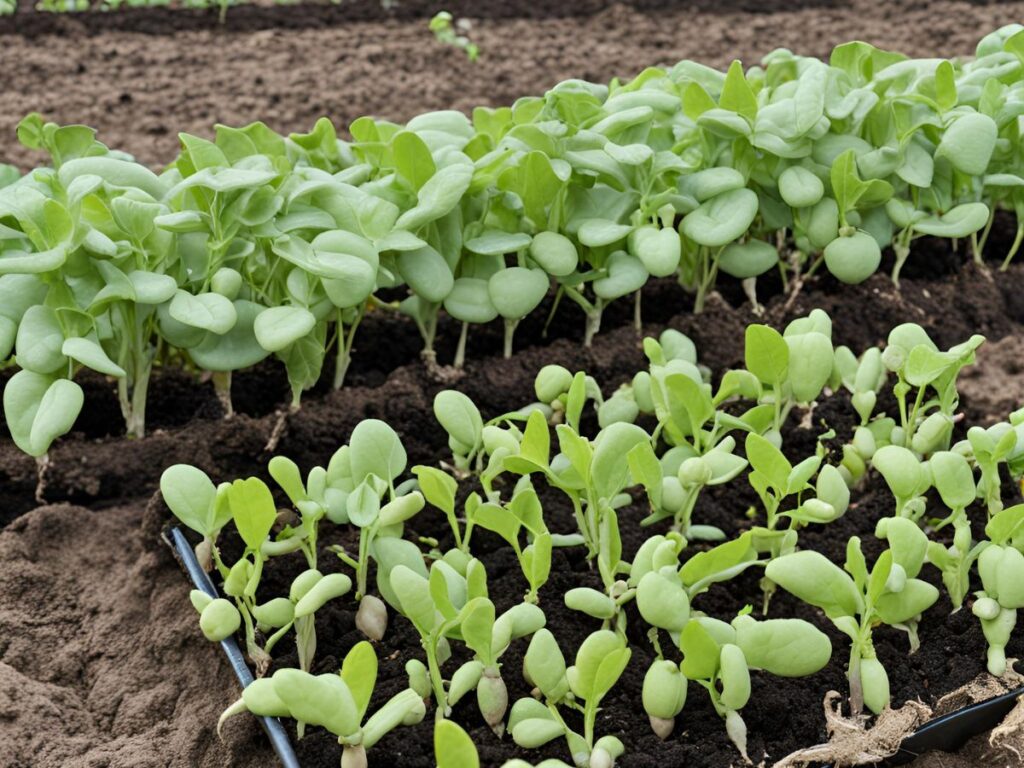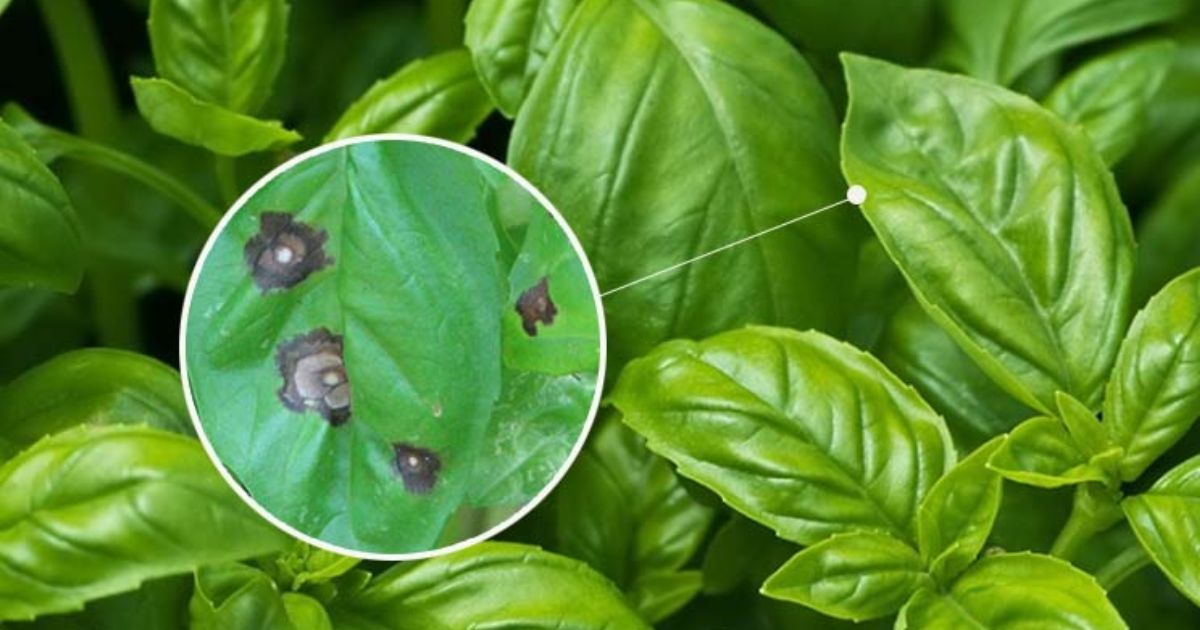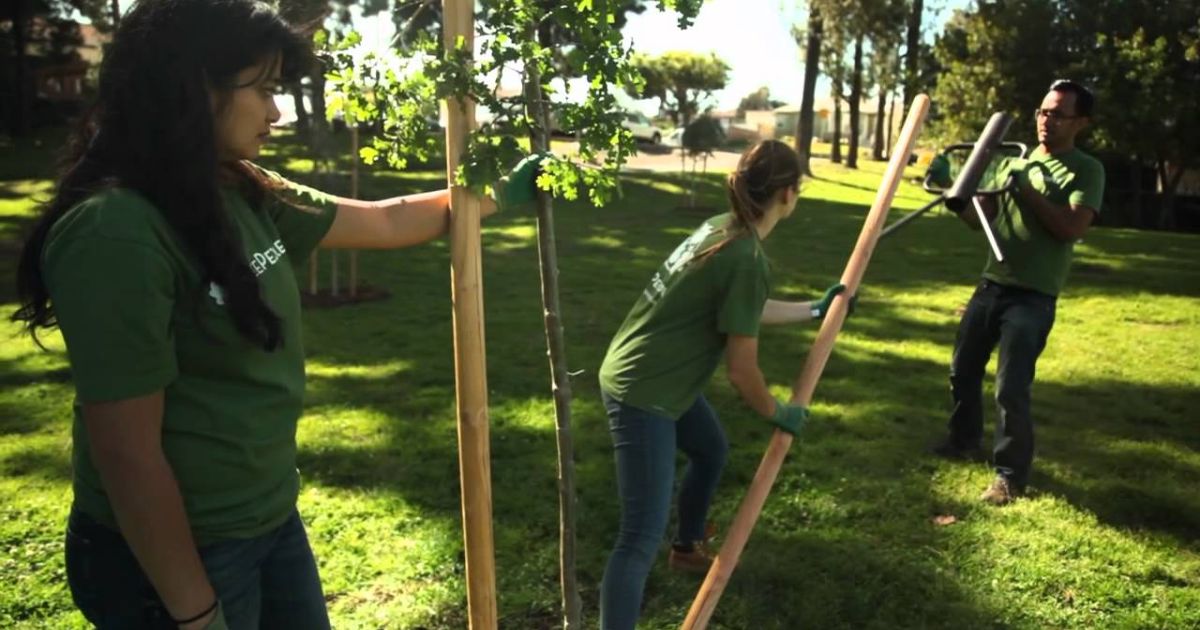Gardening enthusiasts and sustainable farmers understand the immense value of covering crops to maintain and enhance soil health. Among the various cover crops available, fava beans are a brilliant choice for your garden. These hardy legumes offer many benefits, from enriching the soil with essential nutrients to protecting it against erosion and weeds. Planting fava beans as a cover crop improves soil fertility and promotes a healthier, more resilient garden ecosystem.
One of the key reasons why fava beans are an excellent cover crop is their remarkable ability to fix nitrogen in the soil. As a legume, fava beans form a symbiotic relationship with nitrogen-fixing bacteria, which helps convert transforming atmospheric nitrogen into a form that plants can use. The requirement for artificial fertilizers is decreased by this natural process, making your garden more sustainable and cost-effective. Moreover, fava beans’ robust root system helps improve soil structure, preventing compaction and enhancing water retention. In this article, we’ll explore why planting fava beans as a cover crop is a smart choice for your garden and how it can lead to thriving, nutrient-rich soil.
What Are Cover Crops?
Cover crops are grown primarily to benefit the soil rather than for direct harvest. They are an essential component in gardening and agriculture, used to cover the soil during off-seasons or between planting cycles of principal crops. The general purpose of cover crops is to protect and enhance soil health, prevent erosion, improve fertility, and manage weeds, pests, and diseases. Common cover crops include legumes like fava beans, clover, vetch and grasses like rye and oats.
The importance of cover crops in sustainable gardening practices cannot be overstated. They play a crucial role in maintaining fertility and soil structure by incorporating organic materials and enhancing microbial activity. Cover crops also reduce soil erosion by shielding the surface from the impact of wind and rain, which is particularly important in regions prone to soil degradation. Additionally, covering crops helps suppress weeds by out-competing them for space and nutrients, reducing the need for chemical herbicides. Cover crops fostering a healthy, balanced ecosystem contribute to more resilient gardens and agricultural systems, making them a cornerstone of sustainable farming practices.
Overview of Fava Beans
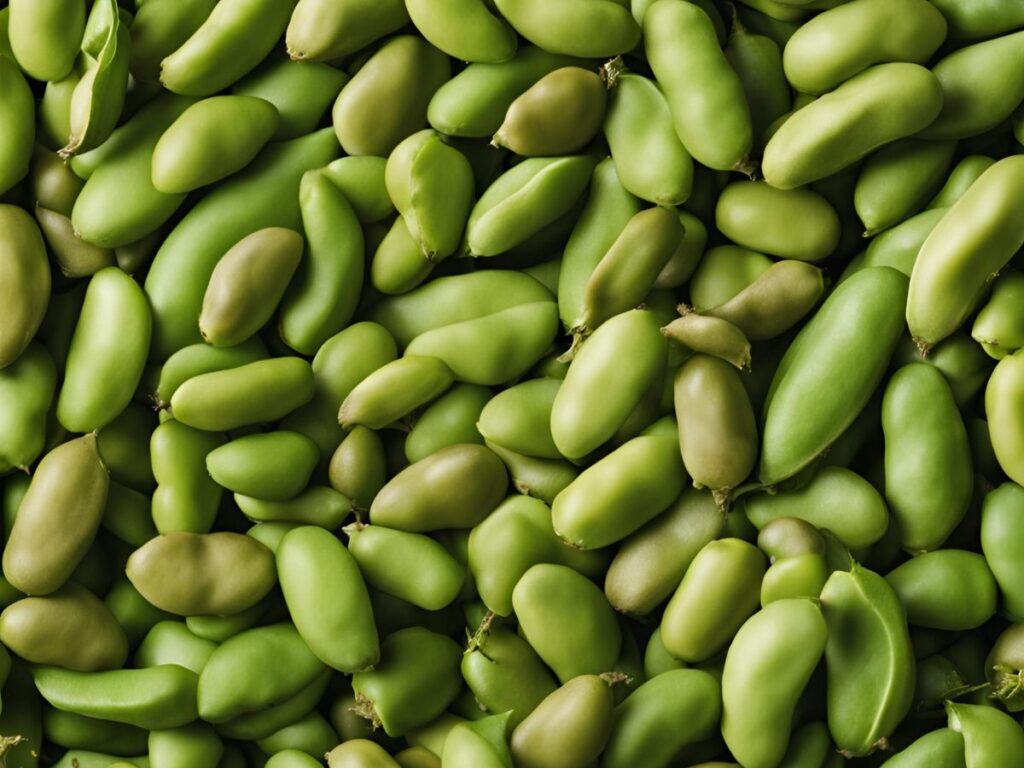
Broad beans, another name for fava beans, are a type of flowering plant that belongs to the Fabaceae family of beans and peas, with the botanical name Vicia faba. They are characterized by their sturdy stems, large pods containing flat, oval seeds, and a deep root system that contributes to their resilience and soil-enhancing properties. Fava beans cover crop beans are known for their ability to thrive in various climates and soils, making them a versatile choice for small gardens and large agricultural operations.
Historically, fava beans have been cultivated Throughout countless years, beginning with the earliest societies in the Mediterranean and the Middle East. They have been a staple food crop and an integral part of crop rotation systems in traditional agriculture. As a cover crop, fava beans were widely used to improve soil fertility due to their nitrogen-fixing capabilities. Farmers would plant them to replenish soil nutrients naturally, reduce the reliance on synthetic fertilizers, and improve the overall health of their fields. The historical use of fava bean cover crop in agriculture underscores their enduring value in sustainable farming practices. This tradition continues today as gardeners and farmers seek eco-friendly ways to enhance soil quality.
Benefits of Planting Fava Beans as a Cover Crop
Planting fava beans as a cover crop offers many benefits for soil health and garden productivity. Here’s a detailed look at how fava beans contribute to sustainable gardening:
A. Soil Fertility Improvement
- Nitrogen Fixation: Fava beans are legumes that establish a symbiotic association with Rhizobia, which are nitrogen-fixing bacteria. The nodules on the roots of these bacteria fava bean cover crop and convert atmospheric nitrogen into a form that plants can use. Nitrogen, an essential ingredient for plant growth, is added to the soil through this procedure, reducing the need for synthetic fertilizers.
- Nutrient Availability: Beyond nitrogen fixation, fava beans improve the availability of other nutrients. They release vital nutrients into the soil as they break down, making them more accessible to subsequent crops and enhancing soil fertility.
B. Soil Structure Enhancement
- Root System: Fava beans have a deep and robust root system penetrating the soil, helping break up compacted layers. This process loosens the soil, improves aeration, and enhances water infiltration, creating a better environment for future plant roots.
- Organic Matter: When fava beans are tilled back into the soil or left to decompose, they add a significant amount of organic matter. This organic matter improves soil texture, increases its capacity to retain moisture, and fosters a healthy ecosystem of beneficial microorganisms. A Beginner’s Guide To Mycorrhizal Fungi
C. Erosion Control
- Covering Bare Soil: Fava beans grow densely and provide excellent ground cover, protecting the soil from being washed or blown away. This coverage is particularly beneficial in preventing soil erosion during the off-season when fields might otherwise be bare.
- Wind and Water Erosion: By covering the soil, fava beans as cover crop shield it from the erosive forces of wind and water. Their roots also help to anchor the soil, reducing the likelihood of erosion and maintaining the integrity of the topsoil.
D. Weed Suppression
- Competing with Weeds: The dense growth habit of fava beans allows them to outcompete weeds for light, space, and nutrients. This natural suppression of weeds minimizes the need for chemical herbicides, promoting a more organic approach to gardening.
- Allelopathic Properties: Fava beans may also exhibit allelopathic properties, releasing compounds into the soil that inhibit the growth of certain weed species, further aiding in weed control. how to tell if an avocado is ripe
E. Pest and Disease Management
- Attracting Beneficial Insects: Fava beans attract beneficial insects, such as pollinators and natural predators of common garden pests. This lessens the need for chemical pesticides and contributes to the creation of a healthy ecology.
- Breaking Pest Cycles: By diversifying the types of plants grown in the garden, fava beans overwinter can disrupt the pest and disease life cycles that might otherwise build up in a monoculture system. This rotation helps to manage and reduce pest populations naturally.
By incorporating fava beans as a cover crop, gardeners can enhance soil health, suppress weeds, control erosion, and manage pests, making it an innovative and sustainable choice for improving garden productivity.
How to Plant Fava Beans as a Cover Crop
Planting fava beans as a cover crop involves a few strategic steps to maximize their growth and soil benefits. Here’s a detailed guide:
A. Best time to Plant
- Seasonal Considerations: The ideal time to plant fava beans depends on your climate. In temperate regions, they are best sown in the fall or early spring. They can be planted in late fall to grow over the winter in warmer climates. Fava beans are frost-tolerant and can survive mild winters, making them suitable for cool-season planting.
B. Soil Preparation
- Soil Requirements: Fava beans grow best on fertile, soil that drains properly and has a pH of 6.0 to 7.5. Even though they can tolerate different kinds of soil, fava bean plant, if properly prepared, they prefer loamy soil that is high in organic matter.
- Preparation Steps:
- Clear the planting area of weeds and debris.
- Loosen the soil to about 12 inches with a tiller or garden fork.
- To increase soil fertility, add compost or well-rotted manure.
- Level the soil surface to ensure even planting.
C. Planting Techniques
- Seeding Depth and Spacing: Sow the seeds of fava beans 1 to 2 inches deep in the ground. In rows 18 to 30 inches apart, place the seeds 4 to 6 inches apart. This spacing allows for optimal growth and root development.
- Watering and Care: After planting, water the area thoroughly to help the seeds settle. Fall planting fava beans require consistent moisture, especially during germination and early growth stages. Make sure the soil doesn’t get soggy but stays uniformly damp. Mulching the area around the plants can help control temperature and hold onto soil moisture.
D. Incorporating into Soil
- Timing: The best time to incorporate fava beans into the soil is when they begin to flower but before the beans fully mature. This stage ensures that the maximum nitrogen has been fixed into the root nodules.
- Methods:
- Tilling: Use a tiller to chop the plants and mix them into the top 6 to 8 inches of soil. This method evenly distributes the organic matter and nitrogen throughout the soil.
- Chopping and Turning: For smaller gardens, you can use a spade or garden fork to chop the plants into smaller pieces and turn them into the soil. Allow the incorporated plant material to decompose for a few weeks before planting your next crop.
Following these steps, you can successfully plant and utilize fava beans as a cover crop, enriching your soil and preparing it for future planting seasons. can i plant green beans in september
Potential Challenges and Solutions
While fava beans offer numerous benefits as a cover crop, they are not without their challenges. A successful planting can be ensured by being aware of these possible problems and knowing how to resolve them.
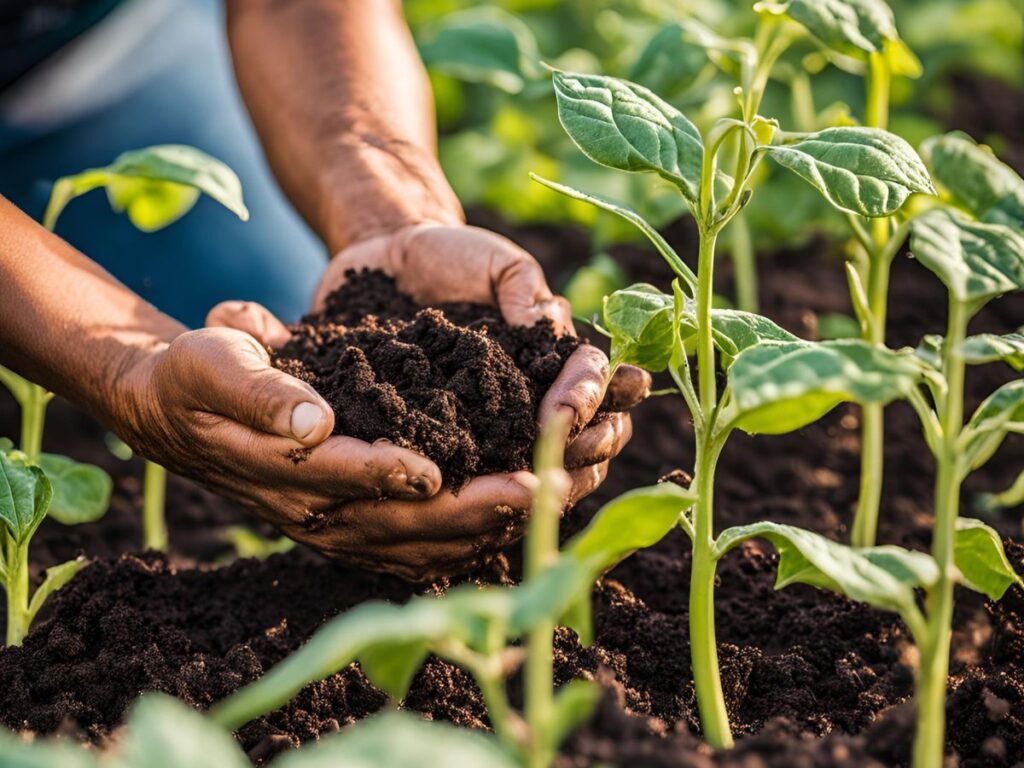
A. Climate Sensitivity
- Frost Tolerance: Fava beans are generally frost-tolerant and can survive temperatures of about 20°F (-6°C). Long-term exposure to low temperatures, however, can harm the plants in regions with harsher winters. To manage this, you can:
- Plant fava beans in late fall beans to plant or early spring to avoid the coldest months.
- Use row covers or mulch to provide extra insulation and protect the plants from extreme frost.
- Select cold-tolerant varieties that are better suited to withstand lower temperatures.
- Drought Resistance: Fava beans prefer moist conditions and may struggle in dry climates. However, they can be grown successfully in drier regions with proper care. Here are some tips:
- In order to strengthen drought resistance and encourage deep root development, water the plants sparingly yet deeply.
- To prevent evaporation and preserve soil moisture, mulch the area surrounding the plants.
- Choose drought-tolerant varieties that can better withstand periods of low water availability.
B. Pests and Diseases
- Common Issues: Fava beans can be susceptible to various pests and diseases, including:
- Aphids: These tiny insects can damage plants by sucking sap, leading to curled leaves and stunted growth.
- Chocolate Spot: A fungal disease that causes brown spots on leaves and stems.
- Root Rot: Often caused by overly wet soil conditions, leading to decayed roots and plant wilting.
- Preventive Measures: To minimize the impact of pests and diseases, implement the following solutions:
- Aphids: Encourage natural predators like ladybugs or use insecticidal soap to control aphid populations.
- Chocolate Spot: Ensure good air circulation by not overcrowding plants and avoid overhead watering to reduce humidity around the foliage.
- Root Rot: Improve soil drainage and avoid overwatering to prevent waterlogged conditions that promote root rot.
- Rotate your crops to lessen the accumulation of pests and diseases that are carried by the soil.
- Regularly inspect plants for early warning signs of problems and take prompt action to resolve them.
By proactively addressing these potential challenges, you can maintain healthy fava beans to plant and enjoy their full benefits as a cover crop.
Conclusion
There are many advantages to growing fava beans as a cover crop, which can greatly improve your garden’s output and health. Fava beans are a potent ally in sustainable gardening techniques, helping to improve soil fertility through nitrogen fixation, improve soil structure, and stop erosion. Their ability to suppress weeds, attract beneficial insects, and break pest cycles further adds to their value as a cover crop. is a banana a herb
If you want to naturally boost your garden’s health, consider incorporating fava beans into your planting routine. Not only will you improve soil quality, but you’ll also contribute to a more sustainable and resilient garden ecosystem. Give fava beans a try and see for yourself the amazing impact they may have on your garden!
FAQs:
1. What are the benefits of planting fava beans as a cover crop?
Fava beans improve soil fertility through nitrogen fixation, enhance soil structure, prevent erosion, suppress weeds, and help manage pests and diseases. These benefits contribute to healthier, more productive soil for future crops.
2. When is the best time to plant fava beans as a cover crop?
Fall is the ideal season to cultivate fava beans or early spring, depending on your climate. They are frost-tolerant and can grow over the winter in milder climates.
3. How do fava beans improve soil fertility?
Nitrogen from the atmosphere is fixed into the soil by their root nodules, enriching the soil with this essential nutrient. They also enhance the availability of other nutrients and add organic matter when they decompose.
4. What type of soil is ideal for growing fava beans?
Fava beans thrive in well-drained, fertile soil with a pH between 6.0 and 7.5. Although they may adapt to several types of soil if properly prepared, they prefer loamy soil that is high in organic matter.
5. How do fava beans help with weed suppression?
The dense growth of fava beans competes with weeds, decreasing their capacity to grow and proliferate. This helps keep the garden bed weed-free.

